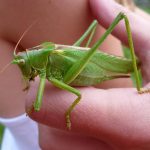Ants, along with wasps and bees, are classified as members of the order Hymenoptera. Ants are eusocial insects that belong to the family Formicidae. Ants evolved during the Cretaceous period from vespoid wasps. There are an estimated 22,000 species of ant that have been classified so far.
Ants live in colonies that range in size. They can be small, with only a few dozen living in small natural holes, or they can live in huge colonies with millions of other ants in a more organised way. Larger colonies are made up of several different castes of sterile, wingless females. The majority of these castes are made up of workers, also known as ergates, but there are also soldiers, also known as dinergates. Ants are very diligent when it comes to keeping the nest clean and usually have an area they designate as a bin pile. Keep reading to discover what do ants do with their injured.
What do ants do with their injured?
Some species of ants will actively seek out termites in order to kill them and bring them back to feed the colony. However, termites have very powerful mandibles, and those who get attacked by them frequently suffer injuries, and some even lose limbs during the battle. Injured ants will be rescued and carried back to the nest to be cared for. Read more about ants going to war here.
How do ants know when another ant is injured?
Injured ants give off a pheromone that tells other ants they are injured and need to be rescued. If there are lots of injured ants, the rescuing ants will organise themselves into a kind of triage system, which ensures that only the ants that have a chance of being saved are the ones that are rescued. When the injured ants are brought back to the nest, the nestmates will tend to them and clean their wounds.
What behaviours do injured ants exhibit?
Injured ants exhibit specific acting behaviours that signal to other ants that they are injured. These behaviours are similar to playing dead, including slowing down and falling over. The sluggish, clumsy movements of an injured nest-mate, as well as the pheromone she produces, alert the other ants to the fact that she is hurt and needs assistance. Once discovered, the injured ant folds up her legs into a position similar to a pupa and lies still, making her easier to carry. If the other ants don’t collect her, she will return to the nest on her own.
What do ants do with ants that have died?
Social insects, such as ants, bees, wasps, and termites, exhibit a behaviour known as necrophoresis, in which they remove the corpses of deceased members of their colony from within the nest or hive. This behaviour is thought to serve a sanitary purpose to prevent disease or infection from spreading throughout the colony.
Ants are extremely hygienic insects that take care of their nests; in most cases, they have a particular location that they will use to dispose of their waste. The dead bodies of the ants will either be moved to a location a short distance away from the nest, or they will be thrown onto the heap with all of the other waste that they produce.
Do all ants remove dead ants?
Yes and no. The members of a colony who are tasked with the responsibility of transporting the bodies of dead ants are known as “undertakers.” The undertakers are not limited to this task, but they do move and behave in a manner that is clearly different from that exhibited by the other members of the colony. This means they are much more likely to be responsible for the removal of dead bodies than other ants in the colony. The removal of dead bodies can also be done by ants that aren’t undertakers, albeit with a lot less consistency.
Can an ant survive with a broken leg?
Yes, it is possible for ants to recover from injuries such as a broken leg. It is not uncommon to come across ants that are moving around and behaving normally despite having missing body parts and damage to their exoskeletons. Ants and other insects, in general, do not have the ability to regenerate body parts in the same way that crabs, lobsters, and arachnids do. Even in these animals, the ability to regenerate is heavily reliant on the animal continuing to grow. This is because new limbs are formed underneath the old exoskeleton, and they become visible as they moult. Once an ant reaches the adult stage of its life cycle, it does not moult again.
Why do ants die after the queen dies?
A queen ant is the most important member of an ant colony. She is the only one with the ability to reproduce. There is usually only one queen in a colony. If she dies, there will not be another queen to take her place. Additionally, the workers in the colony will not accept a queen from another colony, which means that the population will continue to decrease and, over time, die out completely.
What would happen if ants disappeared from the Earth?
Ants are one of the most highly populated species of insects, and they play an important role in the aeration and fertilisation of the soil. In addition, a wide variety of other animals rely on ants as a source of food. If all ants disappeared, it would be terrible for nature and the ecosystem.















